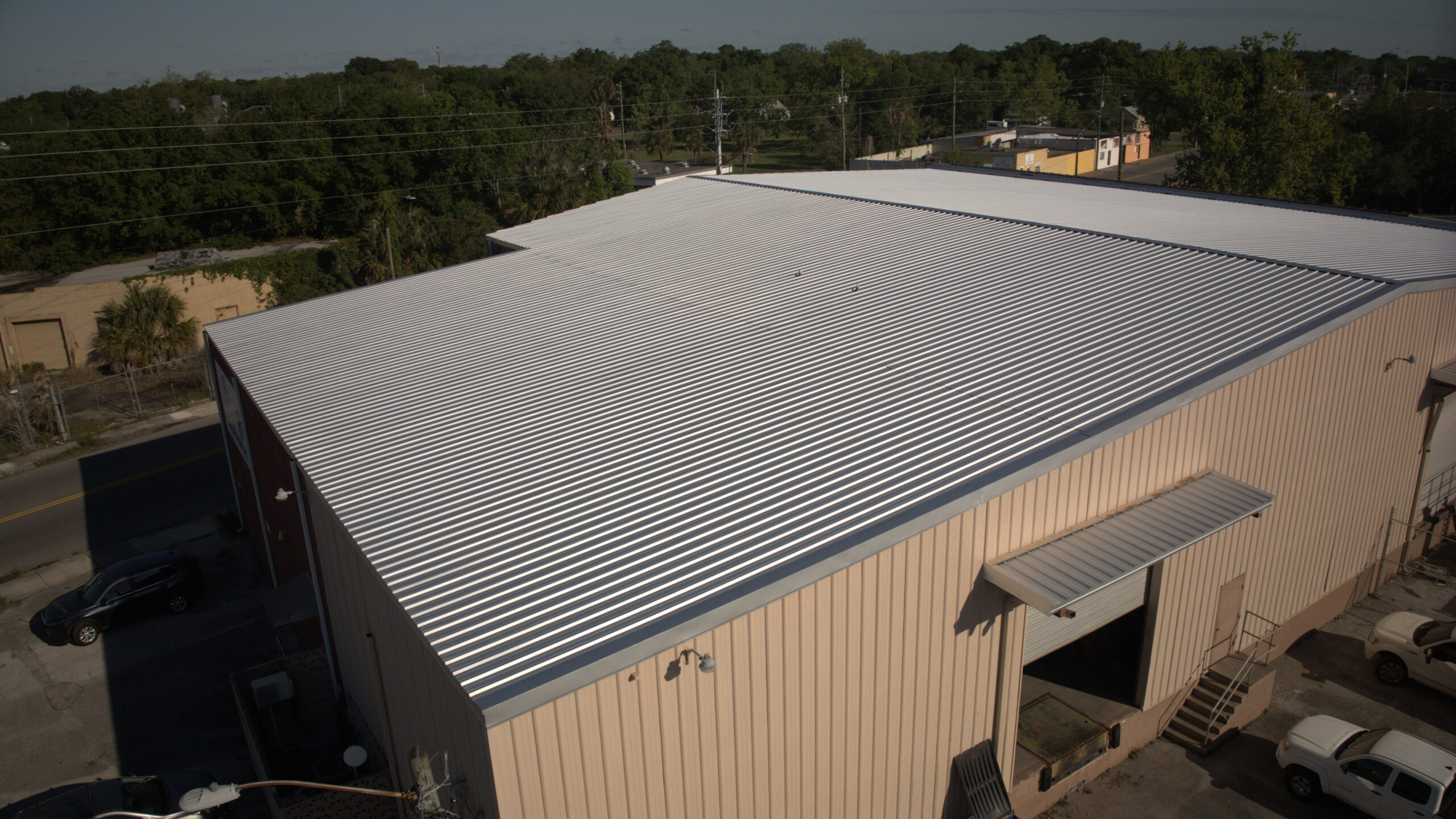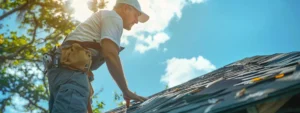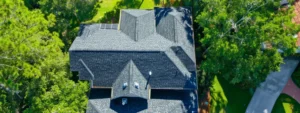Metal roofing is a popular choice due to its durability and longevity.
However, understanding the specifics of low slope metal roofing is crucial. This includes knowing the best practices, benefits, and considerations when choosing this type of roofing.
In this guide, we aim to provide comprehensive resources on low slope metal roofing. These resources will help homeowners, contractors, and architects make informed decisions.

Whether you’re considering metal roofing options for a residential or commercial building, this guide is for you.Understanding Low Slope Metal Roofing
Low slope metal roofing is a specific type of roofing solution.
It’s designed for roofs with a pitch that falls within a certain range.
Typically, a roof is considered low slope if its pitch is less than 3:12. This means for every 12 horizontal inches, the roof height increases by less than 3 inches.
Understanding the specifics of low slope metal roofing is crucial.
This includes knowing the best practices, benefits, and considerations when choosing this type of roofing.
Here are some key points to consider:
- Durability and longevity of metal roofing
- Importance of proper installation
- Different types of metal roofing materials suitable for low slope roofs
- Energy efficiency and cost savings over time
- Aesthetic versatility of metal roofing
- Maintenance tips for optimal performance
Defining Low Slope Roofing
Low slope roofing is a term used in the roofing industry.
It refers to roofs with a pitch or slope that is less than 3:12.
This means for every 12 horizontal inches, the roof height increases by less than 3 inches.
Benefits of Metal Roofing for Low Slopes
Metal roofing offers several benefits for low slope roofs.
Firstly, it’s highly durable and can last for several decades with proper maintenance.
Secondly, metal roofing is resistant to fire, wind, and hail, making it a safe choice.
Thirdly, it’s energy-efficient, reflecting solar radiant heat and reducing cooling costs.
Lastly, metal roofing is aesthetically versatile, complementing various architectural styles.
Choosing the Right Metal Roofing Material
Choosing the right metal roofing material is crucial.
It can significantly impact the performance, durability, and aesthetics of your roof.
Different types of metal roofing materials are suitable for low slope roofs.
Types of Metal Roofing Materials
There are several types of metal roofing materials.
These include steel, aluminum, copper, and zinc.
Steel is the most common due to its strength and affordability.
Aluminum is lightweight and resistant to corrosion, making it suitable for coastal areas.
Copper and zinc are premium options, offering superior durability and a distinctive appearance.
Considerations for Climate and Building Codes
When choosing a metal roofing material, consider your local climate.
Certain materials perform better in specific weather conditions.
Also, check your local building codes as they may restrict the use of certain materials.
Installation and Maintenance of Low Slope Metal Roofs
Proper installation and maintenance are key to the longevity of low slope metal roofs.
Incorrect installation can lead to water pooling and leaks.
Regular maintenance can prevent these issues and extend the roof’s lifespan.
Proper Installation Techniques
Proper installation of a low slope metal roof requires expertise.
It involves correct alignment, secure fastening, and adequate sealing.
Hiring experienced roofing contractors can ensure quality installation.
Maintenance Tips for Longevity
Regular maintenance of your metal roof is essential.
It includes routine inspections, cleaning, and timely repairs.
Environmental and Energy Efficiency Aspects
Metal roofing is not just durable, it’s also energy-efficient.
It reflects solar heat, reducing cooling costs in summer.
This energy efficiency can lead to significant cost savings over time.
Energy Efficiency and Cost Savings
Metal roofs can save you money on energy bills.
Their reflective properties help keep buildings cooler in hot weather.
Environmental Benefits of Metal Roofing
Metal roofing is environmentally friendly.
It’s often made from recycled materials and is fully recyclable at the end of its life.
Common Challenges and Solutions
Low slope roofs can present unique challenges.
Water pooling and leaks are common issues.
However, with the right materials and installation techniques, these can be effectively managed.
Addressing Water Pooling and Leaks
Proper installation is key to preventing water pooling and leaks.
A well-installed metal roof can effectively shed water, even on low slopes.
Insulation and Ventilation Considerations
Insulation and ventilation are crucial for low slope metal roofs.
They help manage temperature and moisture, ensuring the longevity of the roof.
Conclusion and Next Steps
Choosing a low slope metal roof can be a smart decision. With the right resources and professional guidance, you can enjoy a durable, energy-efficient, and aesthetically pleasing roof for years to come. Contact Aj Wells Roofing today at 904-553-0069 to get started on your next roofing project.




